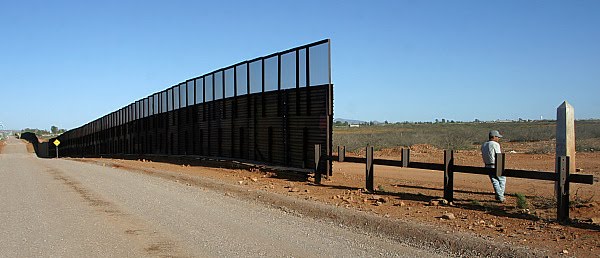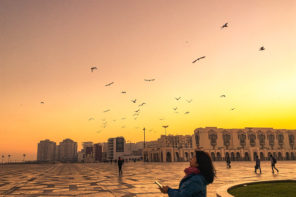Two particularly significant types of borders divide the global world. There are the national borders separating different countries, and then there are the class borders separating two different experiences of the world, each a world of its own. On one hand the world where a transnational working class and a transnational under class of people are living and made to feel that national borders are exceptionally important and difficult to cross. On the other hand, a world experienced as open and almost borderless and largely enjoyed by the upper classes who are truly at home in the world. This explains the paradoxical experience, referred to by Wendy Brown, in her Walled States, Waning Sovereignty, of increased spatial openness and fusion accompanied by a proliferation of protective walls. It is not only the fact that the capacity to move is unequally distributed, as scholars of ‘mobility’ have indicated. As importantly, it is the class difference in the way people move. Some roam the globe like masters the others like slaves. Some are the subjects of the global order, the others are its objects, often circulating strictly according to the needs of capital. Some, like the asylum seekers, try to muster a bit of agency in the face of the global/national forces that aim to reduce them to a state of ‘things’. They are like escaping slaves attempting to free themselves from the global/national order of the border by traveling in its shadows and through its cracks. And they are caged and treated like escaped slaves when caught.
When asylum seekers are stopped from crossing a border we think that they are merely stopped from crossing a national border. They are. But at the same time they are also being stopped from crossing the border between the world of national borders in which they are enslaved and forced to remain and the borderless world that remains the reserve of the economic and cultural (artistic, academic, etc.) upper classes.
I was often made aware of this uneven experience of globalisation during my fieldwork when interviewing members of the Lebanese diaspora across the world. For instance, the Lebanese in Australia who, at least for most of the twentieth century, often came from rural and underdeveloped parts of Lebanon, and are themselves poor in economic and cultural capital, always speak of the fact that they have ‘migrated’ or are ‘migrating’ to Australia. The Lebanese in Europe or in New York or Montreal on the other hand who are often rich in both economic and cultural capital rarely use the concept of ‘migration’. They often ask each other ‘so, where are you living?’ They very clearly give out a sense that the world is their turf and they can opt to ‘live’ anywhere they wish. This highlights the extent to which the notion of ‘globalisation’ posits a unified experience of the world that actually mystifies the fact that such a unified experience hardly exists or is minimal. In fact, what we have is an uneven experience of globalisation that is ‘intersectionally’ structured by race as well as class and, particularly in the case of the transnational circulation of domestic labour, gender. Such an experience is a continuation of a long history of ‘two global orders’ that differentiated the world of the slave-owners from that of the slaves, the world of the colonial masters from that of the colonized labourers, and, as importantly, though not often noted, the sovereign worlds of settler-colonialists from the a-sovereign ethnic suburbs born out of modern migration.









